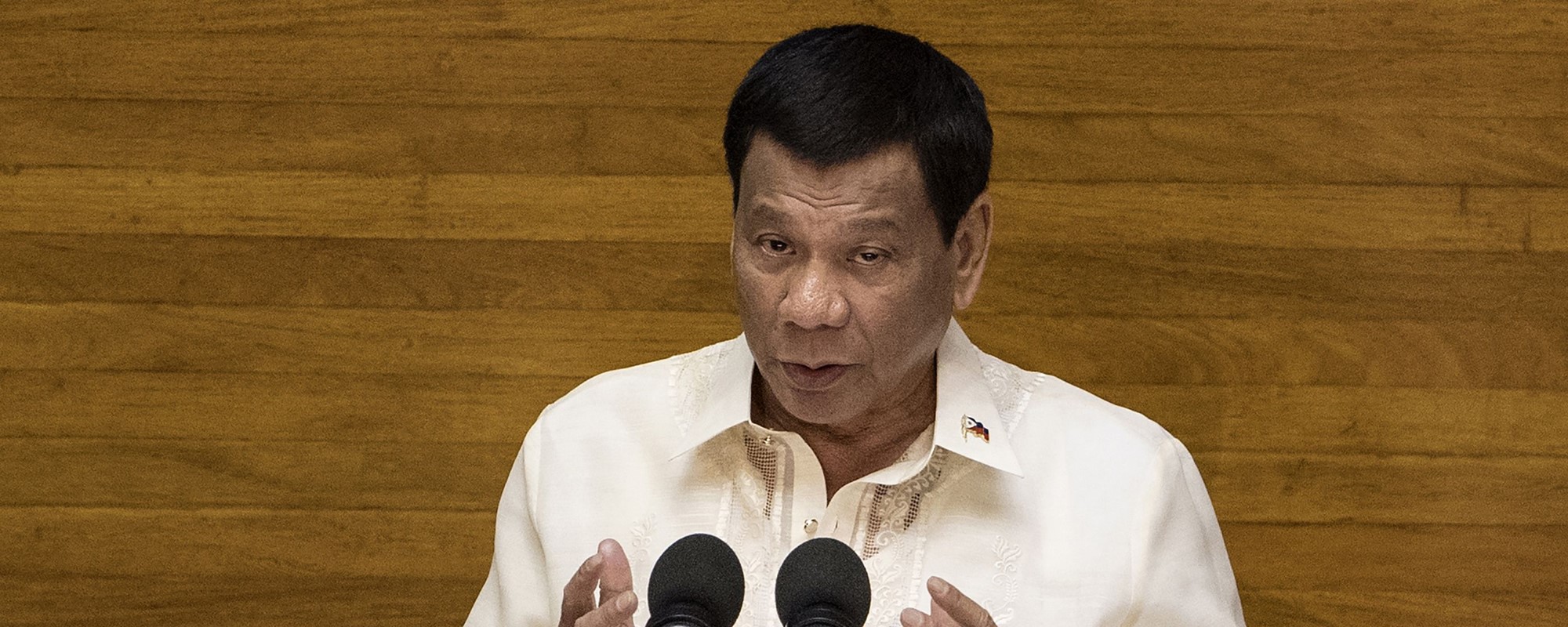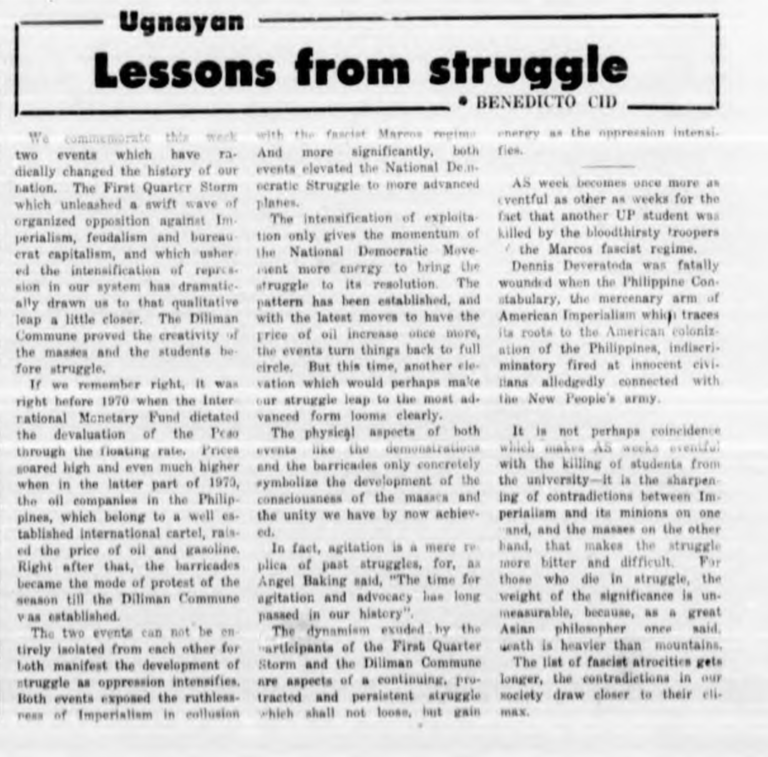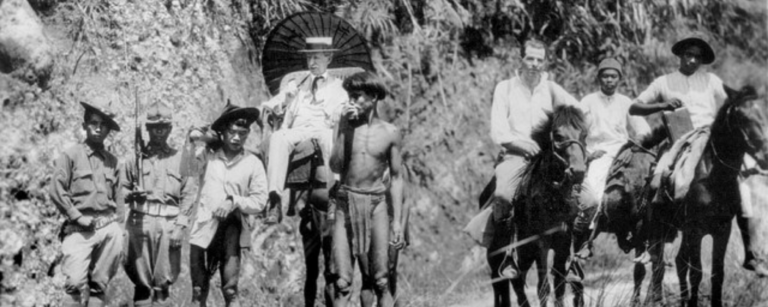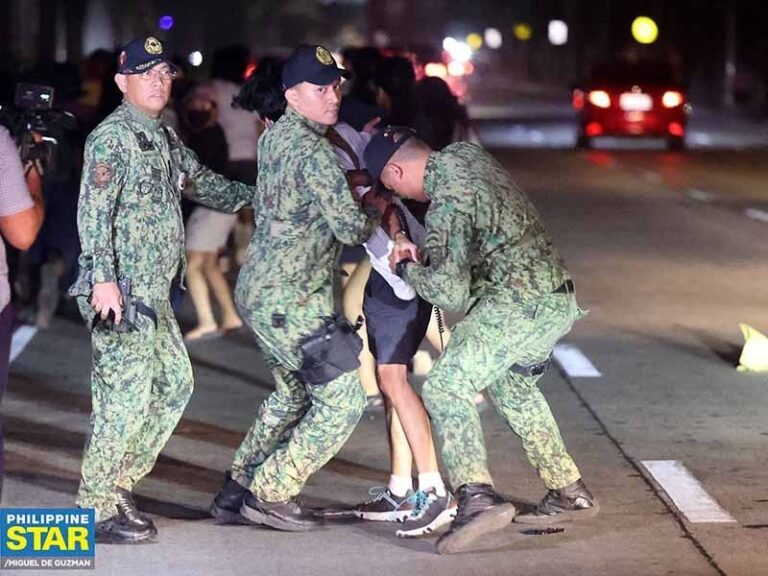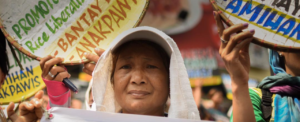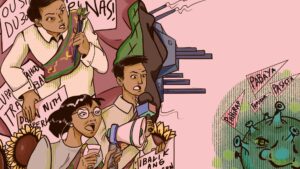
“Kidnappers and thieves are the least of your worries; beware of the ones who crave your blood and covet your soul…They can’t be bound by handcuffs.”
— Alexandra Trese in the opening scene of Trese(2021)
Sa Piling ng mga Aswang, The Aswang Chronicles, Corazon: Ang Unang Aswang, Maria Labo, Patient X, Treseand countless other films and series with “Aswang” in their title have captured the imagination of Filipinos with their stories about shape-shifting ghoul-like creatures or evil spirits in Philippine folklore who thirst for human blood, flesh, and even souls.
However, Alyx Ayn Arumpac’s feature documentary “Aswang” features the most horrifying aswangs living among us — Rodrigo Duterte and his ilks. Much like the aswangs which have become fixtures in the horror films of Philippine cinema, state-sponsored killings through the failed and bloody “war on drugs” have been fixed horrors in Philippine society ever since Duterte rose to power.
BAC Councilor and former STAND UP Secretary General Therese Sandoval recount how, from the onset, the Duterte regime prioritized fascist attacks on the vulnerable sectors of Philippine society.
“The streets have been washed with blood under a de facto Martial Law rule. The regime — seemingly perched above the laws — executes Filipinos without seeing the light of courtrooms. Innocent lives are only called collateral damage and executions are justified using resistance against armed officers,” Sandoval said.
Moreover, she surmised that the Duterte regime was indifferent to the root cause of the country’s drug problem: poverty. Duterte must be held accountable for his crimes against the Filipino people. His blood-thirst tribe increased as uniformed (in)justices hovered the vulnerable communities day and night to achieve their quota of prey. They rendered anyone — young or old — as guilty without any reason except that they “fought back” (“nanlaban”).
As early as August 2020, the Philippine National Police (PNP) has already recorded 223,608 casualties of anti-drug operations while the #RealNumbersPH project of the Philippine Drug Enforcement Agency (PDEA) accounted for only 200,632 as of April 30, 2021. From these cold statistics lie the deceiving numbers of how many are killed. A war on numbers is embedded in a war on drugs.
As of the latest, PDEA records 6,117 deaths in anti-drug operations from July 1, 2016, to April 30,2021 despite the fact that the PNP has already counted, on their end, 7,884 deaths from July 1, 2016 to August 31, 2020. From these horrendous figures, 5,655 were allegedly killed for “fighting back” or “resisting arrest” — an accusation countless times disproven by autopsies and security cameras. Furthermore, of all these atrocious numbers, only 53 cases were made accessible for the Department of Justice (DOJ) to investigate.
Yet the already huge and “real” number of preyed upon “drug addicts” is still farther from reality than the plausible existence of the mythical aswangs. Several human rights groups and the International Criminal Court (ICC) Prosecutor Fatou Bensouda reported that at least 30,000 civilians were murdered in the “war on drugs” between July 2016 and March 2019. Such numbers still rose by 50 percent in 2020 amid the pandemic and economic crisis. While most people are confined in their homes in covid-induced lockdowns, 155 persons were slaughtered by the “aswangs” between April to July 2020 compared to the 103 killed pre-pandemic within December 2019 to March 2020.
Still, prioritizing the so-called “war on drugs” especially under a pandemic did not solve the problem. Top PNP figures Guillermo Eleazar and Romeo Caramat, themselves, admitted how big of a failure their haunting was. In their concession, it can be seen that the poor users (and the innocent ones) were preyed upon, while the “big drug bosses” ran free in and out of the country, and drugs can be bought “anytime, anywhere.”
Meanwhile, the aswang-in-chief Duterte, who confessed his sin for the extrajudicial killings, was also the first one to admit that his phony war was an utter failure and did so countless times.
The recent one was made just last month in his televised weekly rambling to the people: “I said I can solve the problem in six months…Little did I know that I will be fighting my own government. My critics were correct.”
If any, Duterte and his uniformed (in)justices only succeeded in terrorizing the Filipino people not only within six months but for six long years. While we may never find out if the mythical aswangs are real, the Filipinos have to be more careful of the aswangs in the shape of a president, a politician, the police, and other sinister forces who crave not only money, but blood, flesh, and souls.
While Alexandra in Trese warned that there are monsters among us, and some are humans, we live in a much horrifying society where all monsters are definitely humans that can quench their thirst in broad daylight. These monsters seem to not be bound by the laws; even more horrifying, they are able to weaponize laws in their favor.
But as we have gleaned from the horror movies and series, the aswangs may be terrifying and powerful, yet they’re not immortal and invincible. In fact, they can be slain by almost anything around us — from a litany of prayers to a clove of garlic. What more of these subservient dogs who again and again cowered in fear and kowtowed to their foreign masters?
Together, we can easily put an end to the nightmare the nation has befallen into. A solidarity among the Filipinos with a firm resolve and fervent desire for genuine change is a plunge of bolo — an easy fatal blow — into the hearts of the aswangs among us.
Featured image courtesy of TIME Magazine.


